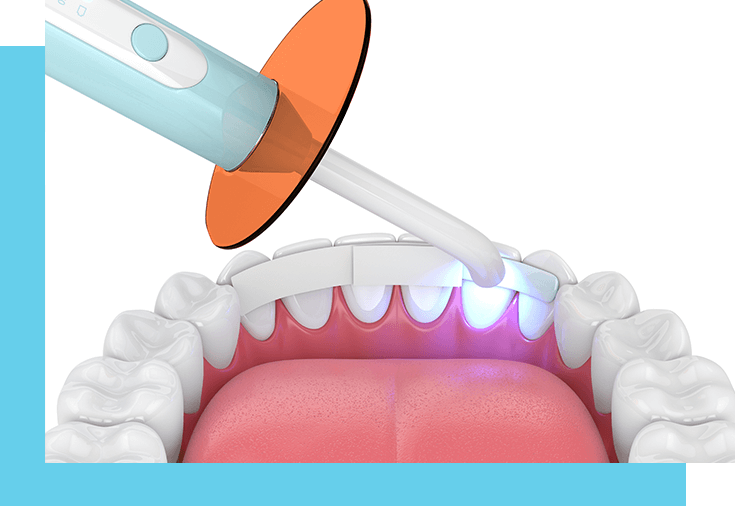What is Dental Bonding?
Dental bonding, also called tooth bonding or composite bonding, is a cosmetic procedure that involves the application of a tooth-colored composite resin material onto teeth. The procedure bonds a tooth-colored resin material to the teeth. Dental bonding can improve the appearance of teeth that are chipped, cracked, discolored, or misarranged.
Dental Bonding Pros & Cons
| Pros | Cons |
|---|
| Minimally invasive procedure |
Not as durable as other restorative options |
| Quick and painless |
Prone to staining and discoloration over time |
| Cost-effective compared to alternatives |
Bonded material may chip or break |
| Versatile application for various issues |
Limited in addressing major tooth alignment issues |
| Preserves natural tooth structure |
Not suitable for larger tooth damage |
Common Issues Dental Bonding Can Fix:
- Repair chipped or cracked teeth
- Tooth discoloration
- Tooth reshaping
- Tooth size and length including making teeth longer
- Protect a tooth’s roots when gums recede
- Worn down or decayed teeth
- Replace amalgam fillings
- Fill gaps in front teeth
Who is a Good Candidate for Dental Bonding?
A good candidate for dental bonding is someone with minor teeth cosmetic issues and who wishes to enhance their smile. This can include small chips, cracks, or gaps in teeth. Consult your dentist for a comprehensive evaluation to determine if dental bonding is the right treatment option for you.
Is Dental Bonding Permanent?
Dental bonding is not a permanent solution to cosmetic dental issues, but it is a long-lasting solution. The plastic resin used in dental bonding is not as strong as your natural tooth enamel. It’s more likely to stain, chip or break than natural teeth. However, many patients can keep their dental bonds for 3-5 years. The better dental bonds and natural teeth are cared for, the longer the treatment will last.
How Long Does Dental Bonding Last on Front Teeth?
Dental bonding front teeth can last between 4 and 8 years, depending on your bite and eating habits. Many patients with bonding on their front teeth avoid biting directly into food. Eating hard foods can compromise the structure of dental bonding.
What Happens During a Dental Bonding Procedure?
Your dental bonding procedure will be done in a single office visit with a few simple steps:
- Preparation. The tooth is prepared for the procedure by lightly etching the surface and applying a bonding liquid.
- Sculpting. Once the liquid sets, a plastic resin is applied and sculpted into the desired shape by the dentist.
- Trimming. Once the resin is set, it is trimmed, smoothed, and polished to a natural appearance.

